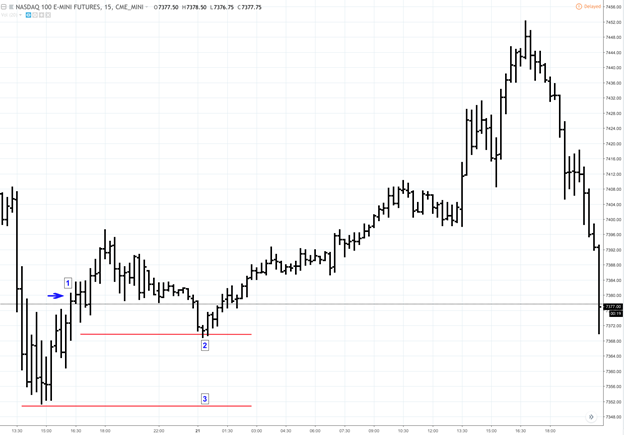Stop loss strategies can play a significant role in managing your trading risk. To protect yourself against unfavorable market movements, particularly sudden and volatile movements, it might be wise to always trade with a stop loss.
But stop losses can also work against you if your placement is not well thought out. In fact, it can be possible for inexperienced traders to lose a significant portion of their trading accounts to poorly-placed stop losses.
Let’s consider a few basic questions before committing to a stop loss method or strategy.
What is the real purpose behind your stop loss placement?
Obviously, stop losses are implemented to “stop losses,’ in other words, to stop losing money over a certain predetermined limit. But if you dig a little deeper, you might come across a basic error in thought that many inexperienced traders tend to make.
So let’s rephrase the question by dividing it into two slightly different questions:
- Did you place a stop loss at a price point where your trade may no longer be valid?
- Or did you place a stop loss at a point where you may be losing too much money even if the trade might still be valid?
If you answer “yes” to the second question, then you might want to reconsider why you are trading setups that you can’t afford to stick with. It may seem commonsensical to avoid trading certain setups that may cost you too much, but it may happen more frequently than you think.
If you are placing “dollar-based” stops rather than “market-based” stops, then you may run into trouble when trading a setup whose potential market-based stop–otherwise known as support or resistance levels–exceeds your dollar-based level.
Example: Bad stop loss placement for an NQ trade

NQU2018: 15-Minute Chart – August 20 – 21, 2018
Let’s suppose you enter a trade, going long one NQ contract at the price of 7380.00 as shown at (1).
Now let’s assume that you are the type of trader who places dollar-based stops and that your typical loss limit per trade is -$200 (minus round-turn commissions and fees of $10). If this is the case, then you would have placed your stop loss at 7370.75 as illustrated by the red line at (2).
Here’s the problem: you just placed a stop based on your own personal dollar loss limit. Perhaps a loss of $200 is the maximum amount of loss you can withstand in one trade. But this loss limit has no relation to a significant market level; it’s just your personal loss limit.
What would have happened is that price would have triggered your stop loss at (2) only to move higher once you were knocked out of your position with a $200 loss.
What might have made sense would have been to place a stop loss at a support level such as the red line at (3). But this would require entering the trade sooner to match a $200 trading loss or risking a loss that would have far exceeded your loss limit.
Perhaps it would have been wiser to not take the trade, as the dollar loss limit had no probably relation to any significant market-determined price point.
We’re not saying that placing a stop loss at a market-determined support or resistance level would increase your odds of success.
But what we are saying is that perhaps a stop loss might be better placed at levels in which a trade might no longer be valid. And those levels typically occur at turning points, which may be represented by support and resistance.
Please be aware that the content of this blog is based upon the opinions and research of GFF Brokers and its staff and should not be treated as trade recommendations. There is a substantial risk of loss in trading futures, options and forex. Past performance is not necessarily indicative of future results.
Please be aware that there are instances in which stop losses may not trigger. In cases where the market is illiquid–either no buyers or no sellers–or in cases of electronic disruptions, stop losses can fail. And although stop losses can be considered a risk management (loss management) strategy, their function can never be completely guaranteed.
Disclaimer Regarding Hypothetical Performance Results: HYPOTHETICAL PERFORMANCE RESULTS HAVE MANY INHERENT LIMITATIONS, SOME OF WHICH ARE DESCRIBED BELOW. NO REPRESENTATION IS BEING MADE THAT ANY ACCOUNT WILL OR IS LIKELY TO ACHIEVE PROFITS OR LOSSES SIMILAR TO THOSE SHOWN. IN FACT, THERE ARE FREQUENTLY SHARP DIFFERENCES BETWEEN HYPOTHETICAL PERFORMANCE RESULTS AND THE ACTUAL RESULTS SUBSEQUENTLY ACHIEVED BY ANY PARTICULAR TRADING PROGRAM.
ONE OF THE LIMITATIONS OF HYPOTHETICAL PERFORMANCE RESULTS IS THAT THEY ARE GENERALLY PREPARED WITH THE BENEFIT OF HINDSIGHT. IN ADDITION, HYPOTHETICAL TRADING DOES NOT INVOLVE FINANCIAL RISK, AND NO HYPOTHETICAL TRADING RECORD CAN COMPLETELY ACCOUNT FOR THE IMPACT OF FINANCIAL RISK IN ACTUAL TRADING. FOR EXAMPLE, THE ABILITY TO WITHSTAND LOSSES OR TO ADHERE TO A PARTICULAR TRADING PROGRAM IN SPITE OF TRADING LOSSES ARE MATERIAL POINTS WHICH CAN ALSO ADVERSELY AFFECT ACTUAL TRADING RESULTS. THERE ARE NUMEROUS OTHER FACTORS RELATED TO THE MARKETS IN GENERAL OR TO THE IMPLEMENTATION OF ANY SPECIFIC TRADING PROGRAM WHICH CANNOT BE FULLY ACCOUNTED FOR IN THE PREPARATION OF HYPOTHETICAL PERFORMANCE RESULTS AND ALL OF WHICH CAN ADVERSELY AFFECT ACTUAL TRADING RESULTS.